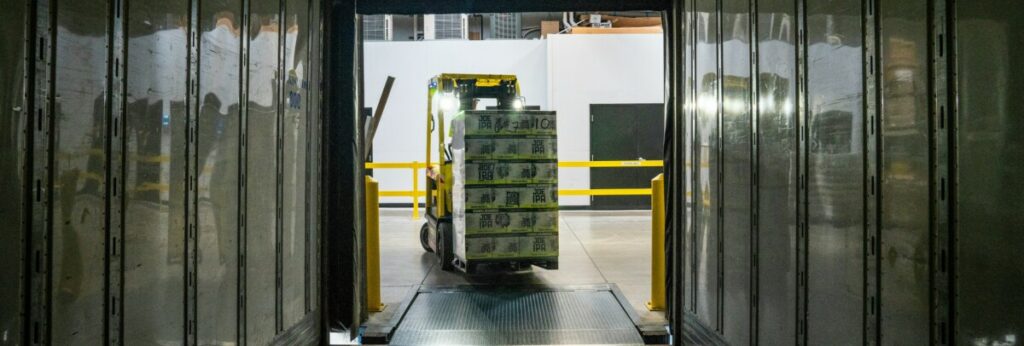Adopting a well-structured logistics system is crucial for the success of any company, especially in the e-commerce sector. Picking and packing are two strategic processes that help maintain a smooth operational flow, reduce errors, and speed up order preparation. In this article, we’ll explore strategies and solutions to optimize these essential steps, enhancing your operations and boosting customer satisfaction.

What Are Picking and Packing in Logistics?
The picking process involves selecting and retrieving the requested items within a warehouse. While this process might seem simple, it requires meticulous planning to ensure that every product is located and retrieved quickly and accurately.
The packing process, on the other hand, focuses on preparing the items for shipment. During this phase, products are carefully packaged, correctly labeled, and prepared for transport to ensure they arrive intact at the final customer.
Despite their apparent simplicity, both phases require coordination and, in many cases, modern technological support to maximize efficiency and minimize issues.
Common Errors in Picking and Packing
Picking processes and packing can easily become a weak point in business management if not properly organized. Errors occurring in these stages not only slow down order fulfillment but can also undermine customer satisfaction and increase operational costs. Identifying and addressing these issues is essential to ensure a smooth workflow and high-quality service.
Picking Errors
The selection and retrieval of items from a warehouse to fulfill specific orders is a critical logistics phase.
However, several errors can compromise operational efficiency and customer satisfaction, including:
- Incorrect product selection: Retrieving the wrong items due to poor warehouse organization or unclear instructions.
- Wrong quantities: Mistakes in counting items, often caused by distractions or tight deadlines.
- Failure to locate products: A disorganized layout or lack of technological systems for locating items can make picking inefficient and time-consuming.
Packing Errors
The packaging and preparation of items for shipment are equally fundamental for proper order management.
Common packing errors include:
- Inadequate packaging: Using unsuitable materials that don’t align with the product type.
- Incorrect labeling: Missing or wrong labels that can lead to shipments being sent to incorrect addresses, causing delays and dissatisfaction.
- Incomplete packaging: Missing or improperly packaged items that risk compromising the overall quality of the shipment.
Strategies to Reduce Errors in Order Preparation
Reducing errors during the order preparation phase is therefore crucial to optimize logistics processes and improve customer satisfaction. Picking and packing are two closely connected stages that require attention to every detail to ensure efficiency and accuracy. The following strategies offer practical and technological solutions to tackle the most common challenges.
Picking Techniques to Improve Efficiency and Reduce Costs
Speed and accuracy in picking processes can make a significant difference. To address the challenges of this operation, several solutions combine organization, technology, and practicality. Here are some of the most effective techniques:
- Implementing warehouse management systems: These tools are indispensable for improving picking. They provide real-time inventory visibility and guide staff through optimized routes, minimizing errors and increasing productivity.
- Using automatic identification technologies: Tools like scanners and barcodes enable quick product identification, reducing manual errors and speeding up operations.
- Optimizing warehouse layout: Strategically arranging goods based on usage frequency or category helps staff reduce picking times. For example, placing high-demand products in easily accessible areas enhances overall picking speed.
Packing Strategies to Expedite Order Fulfillment
An efficient and accurate packing process significantly speeds up order fulfillment, improving customer experience and reducing operational costs. Below are some strategies to optimize this process:
- Standardizing processes: Defining predefined packages for similar products simplifies packing and reduces the time required for packaging. This approach also ensures consistency in shipment appearance.
- Integrating quality control: Introducing a final verification step during packing ensures that the order is complete and compliant. This step reduces the risk of shipping incomplete or incorrect orders, boosting customer satisfaction.
- Automating packaging: Implementing automated packing machines significantly reduces packing time and ensures consistent quality. These solutions are especially effective during activity peaks, such as sales or holidays.
Discover how to optimize your entire Order Fulfillment process with Hubrise!
The Advantages of Integrated Picking and Packing Management: The Hubrise Method
Hubrise offers innovative solutions to optimize picking and packing by integrating warehouses, e-commerce, and logistics into a single system. This centralized management improves operational efficiency and delivers measurable results.
Key advantages of the Hubrise method include:
- Reduced operational errors : Real-time data synchronization minimizes picking and packing mistakes, ensuring every order is correctly prepared.
- Faster deliveries: Automated and simplified processes shorten order preparation times, improving delivery speeds even during peak demand periods.
- Improved customer experience: Accurate orders and timely deliveries build customer trust and satisfaction.
- Cost optimization: Efficient resource usage reduces waste while improving profitability.
Hubrise turns the picking and packing processes into strategic allies for your business, offering flexible and scalable tools to meet the needs of any company. Discover how to optimize your logistics with Hubrise.